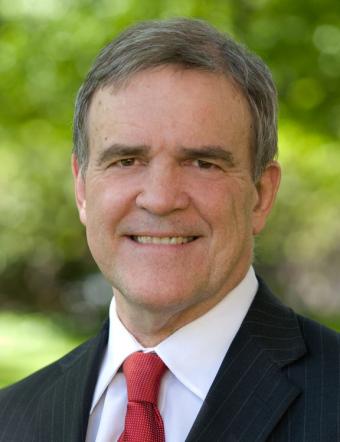Governor Chafee led a group of Rhode Islanders including Mayor Taveras and me to Pittsburgh’s medical complex, the University of Pittsburgh’s Medical Center (UPMC), on October 4, and we saw the future. I left Pittsburgh in 1998 to come to Providence as Chair of Medicine at Brown and its teaching hospitals. The UPMC and its schools of Health Sciences had just begun reorganizing themselves. Today Pittsburgh has become one of the best medical centers in the country and one of the key drivers of the economy in Western Pennsylvania. How did they do it and what can we learn?
The answer starts with the vision from the top. The leadership at the UPMC, the late Tom Detre, former senior vice chancellor for the Health Sciences, and Jeff Romoff, president and CEO of the UPMC, set out clear goals. They aimed to provide the best health care and to have the strongest biomedical research possible. They succeeded: Today UMPC is considered one of the top hospital systems and research institutions in the country. With over 50,000 employees, 20 hospitals and 400 doctors’ offices they rank fourth in the United States in NIH funding. Tom and Jeff did this by recruiting the best doctors and researchers and giving them the resources to succeed. These leaders knew that outstanding medical care and research improves the health of the community and leads to economic development.
In 1998 the UPMC was a very different. It was smaller, somewhat fractionated and misaligned. The various hospitals in Pittsburgh were competing with each other rather than collaborating. Physicians at the medical school were in small practices or separate practice plans. The schools of health sciences, including the medical school, were not tightly linked to the UPMC. This misaligned model resulted in average medical care for the citizens of Pittsburgh, inefficiencies for the physicians and the hospitals, and a scarcity of resources to put into research and education. Over a short period of time, the leadership of the UPMC brought physicians and hospitals into a single, coordinated system. Clinical care for patients became world class. The revenues of the not-for-profit system went from $2.5 billion to $9 billion per year. Research surged.
Such investment in research has paid off. First, discoveries have helped improve the health of the citizens of Pittsburgh, the surrounding area, and the world. Second, research has resulted in robust economic development. Pittsburgh now abounds in biotech startup companies. Direct subsidiaries of the UPMC include a sports complex that provides current orthopedic and rehabilitation care, a medical insurance company, a software marketing group for medical records, and overseas hospitals in Italy and Ireland. Third, UPMC’s schools of health sciences are ranked among the best in the country.
While not everything in Pittsburgh is perfect, we in Rhode Island can learn a lot from its overall success.
Several actions are necessary if we are to follow Pittsburgh’s trajectory. We need to organize the major Alpert Medical School teaching hospitals into an Academic Medical Center, which would simultaneously advance research and medical care. The two principal hospital systems, Lifespan and Care New England, were prevented from merging several years ago. That was a mistake. As a result they compete rather than work strategically with each other. The truth is that our competition both academically and clinically is with Boston, not within Rhode Island. In most places, when threatened, organizations circle the wagons and shoot out. We in Rhode Island seem to circle the wagons and shoot in.
Because physician practices in Rhode Island are highly fractionated, it is difficult to develop new programs for patients, for example a cancer center making it hard to plan for the future and invest optimally in research.
Biomedical research in Rhode Island is strong and vital for the economy. In 2009, despite our small size, we ranked 24th of all states in federal funding for research ($411,336,816) and employment from research (2,742 high paying jobs). We could do much better with improved alignment with the hospitals, physician groups and other academic institutions. Brown together with the other institutions and leaders throughout the state should and will play a more active role in building a robust research enterprise in the state.
As Dean of Medicine and Biological Sciences at Brown, I am convinced that we need to create a strong academic health center that would provide benefits to Rhode Islanders. Patients would benefit from an integrated physician group practice with coordinated care. Physicians would benefit from a streamlined administrative support system, freeing them to spend more time treating patients, teaching, and conducting research. Hospitals and the medical school could plan together and create new programs allowing us to build outstanding clinical and research programs. The citizens of Rhode Island would benefit from economic growth, new companies, and new high-paying jobs. In collaboration with other leaders of the healthcare community, I am willing to work to merge our hospital systems, create a single physician practice plan, bring our hospitals and medical school into alignment and invest in our economy. We saw success in Pittsburgh. We can do the same in Rhode Island.

